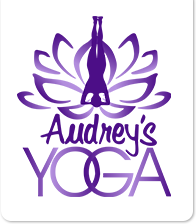What “Should” I Feel While Practicing Yoga?

I get this question a lot in workshops or after yoga classes and I guess it makes sense.When you are new to the practice it natural to want to know if you are “doing it right” and feeling it in the right places. I find it hard to give an exact answer, as each person brings such diverse body experiences to their mat in a yoga class. Yoga is different from lifting weights where you mostly target one specific muscle with each exercise. To me that is the amazing thing about yoga, how each pose can target so many different muscles and areas in the body all at the same time.
An important aspect of yoga is to be mindful of the movements and notice the various changes that occur in the body as well as the mind while practicing. Staying fully in the present moment with the pose really allows for a person to begin to feel the pose and how it benefits their body. Practicing without this mindfulness, or just going from one pose to the next while the mind is off on other thoughts, will limit the benefits yoga can provide.
I encourage students to set an intention at the start of each class. Committing to pay attention to how your body feels in each pose is the first step to understanding what benefits each pose brings for you and your body. Someone with tight hamstrings but more flexibility in the hips will feel different sensations in Warrior 2, than a person with the opposite. Having that intention to listen to the instruction and keeping your mind in the present moment will help you feel the sensations in the poses. Practice without mindfulness can lead to injury.
In yoga pain is not gain. Sharp, stabbing, shooting pains are not expected in yoga. If those sensations are present, it is recommended to stop immediately and seek medical advice. Although yoga teachers should know anatomy and ways to modify the practice to suit your physical difference, they are not doctors. They are not there to prescribe treatment to injuries, only doctors can do that.
What is common to feel during a yoga class? A sense of lengthening or stretching of the muscles. The contracting and shaking of the muscles. An increase of the heart rate. Perhaps even a desire to breathe more quickly as poses are held for longer amounts of time. These types of sensations can be uncomfortable for those that are newer to practicing yoga. There is a steep learning curve when you first start yoga. Many new sensations may feel strange, but with consistent, mindful practice those once strange sensations begin to feel familiar and the understanding begins. Enjoy your more mindful journey.




